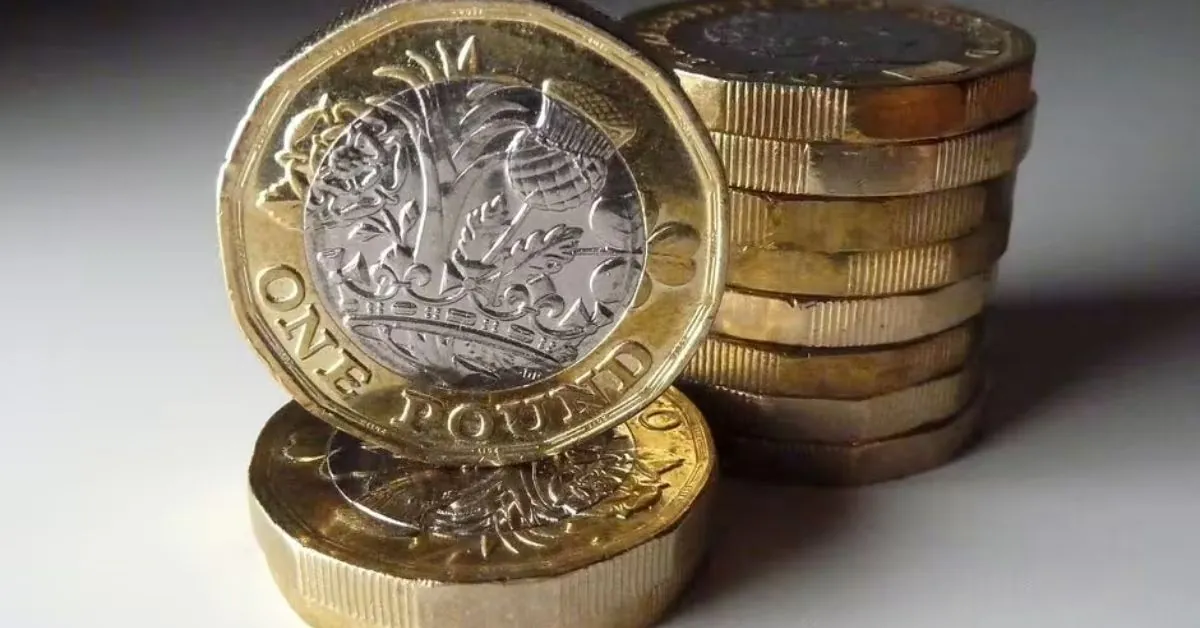In the world of coin collecting, finding a rare or error coin can be a thrilling experience. Recently, a particular error on a £1 coin has been making waves among collectors and enthusiasts. The coin, known as “The Bee” £1 coin, features an intriguing mistake that could make it worth far more than its face value. Here’s everything you need to know about this fascinating find.
What is the “The Bee” £1 Coin?
The “The Bee” £1 coin was released to commemorate King Charles III’s reign and features a new design from 2023. On one side, the coin bears the portrait of the monarch, while the reverse displays two bees, symbolizing his love for nature. These bees are part of the Royal Mint’s efforts to celebrate British wildlife and sustainability.
However, this coin is making headlines due to an error that has been discovered on a limited number of these coins.
The Error: A One-Color Coin
Typically, UK £1 coins are made with two distinct metal rings—an outer ring made of nickel brass and an inner core made from a nickel brass plated alloy. This construction gives the coins a unique appearance, with contrasting colors on each side.
But some collectors have recently reported discovering a variation of “The Bee” £1 coin where both the outer and inner sections are made from the same material, creating a coin that is a uniform color throughout. This single-color coin is considered a major error in the production process.
Why is the Coin Valuable?
Coins with errors are often highly sought after by collectors because they are considered rare and unique. The Royal Mint has strict quality control measures in place, so finding an error coin is exceptionally rare. The single-color “The Bee” £1 coin is likely one of a handful in circulation, if not a one-of-a-kind piece.
For collectors, the rarity of an error coin makes it more valuable than regular coins. Pieces that deviate from standard production can be worth significantly more, sometimes thousands of times their face value, depending on the rarity and demand. In the case of “The Bee” £1 coin, it is possible that this error coin could fetch a high price at auction or among collectors who seek to own a piece of history.
How to Identify the Error Coin
If you’re lucky enough to own a “The Bee” £1 coin, it’s worth inspecting it closely. The key feature that distinguishes the error coin from a regular £1 coin is the uniform color. While most £1 coins have two metal rings of different colors, the error coin will have no distinction between the outer and inner sections, giving it a solid, one-color appearance.
Since such error coins are rare, there may not be many in circulation, so it’s important to check your collection thoroughly to see if you have one.
How Much Could It Be Worth?
While the exact value of a single-color “The Bee” £1 coin will depend on factors such as its condition, rarity, and demand, error coins in general can fetch much higher prices than their face value. Some error coins have been known to sell for hundreds or even thousands of pounds at auctions. For a coin like this, it’s recommended to have it professionally appraised to determine its true value.
The Importance of Expert Appraisal
If you believe you’ve found a rare or error coin, it’s always a good idea to consult an expert. A professional numismatist or coin dealer can help you assess the coin’s authenticity and provide an accurate appraisal. Some rare coins, such as those with significant errors, can increase in value over time, making them a valuable addition to any collection.
Conclusion: A Hidden Gem in Your Collection?
With the chance of finding an error coin so low, it’s worth taking the time to check your collection. If you come across a “The Bee” £1 coin that appears to be made from a single color, you might just have a hidden treasure on your hands. However, it’s essential to proceed with caution and seek the advice of an expert to ensure you’re not overlooking something valuable. The world of coin collecting is full of surprises, and you never know what you might find when you least expect it.




![Tyson Foods Plant [Photo: Food Manufacturing]](https://southarkansassun.com/wp-content/uploads/2023/08/iStock_1185520857__1_.5e441daa51cca-600x337.jpg)







![Silverado Senior Living Management Inc. [Photo: Los Angeles Times]](https://southarkansassun.com/wp-content/uploads/2023/10/download-6-4-600x337.jpg)

![China's Wuhan Institute of Virology [Photo: Nature]](https://southarkansassun.com/wp-content/uploads/2023/09/d41586-021-01529-3_19239608-600x337.jpg)
















